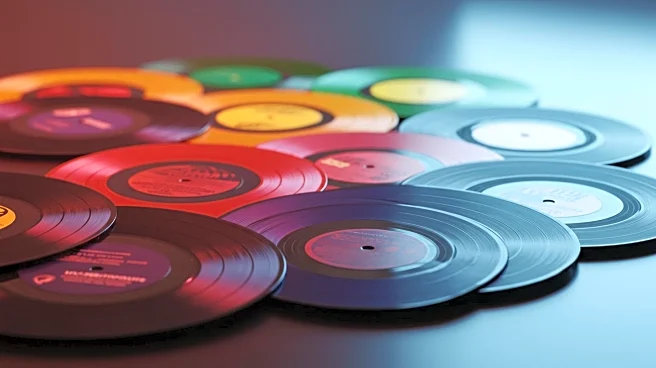Rapid Read • 8 min read
Billboard has updated its rock and alternative charts, which track the diverse and evolving genres of popular music. These charts categorize music into rock, alternative, and hard rock subcategories, measuring streaming, radio airplay, and sales data. The Top Rock & Alternative Albums and Hot Rock & Alternative Songs charts reflect the leading titles in these genres, including alternative pop, dance, and R&B. Billboard also publishes radio-focused rankings such as Alternative Airplay, Mainstream Rock Airplay, and Adult Alternative Airplay, which track plays at specific formats. The Rock & Alternative Airplay list combines these into one audience-based tally. Notable performers in the 2020s include Zach Bryan, Coldplay, Billie Eilish, Fall Out Boy, Imagine Dragons, Noah Kahan, Linkin Park, John Mayer, Panic! At the Disco, Shinedown, and Twenty One Pilots.
AD
The update to Billboard's charts is significant as it reflects the ongoing evolution and diversification of rock and alternative music genres. These charts provide a comprehensive overview of the music industry, influencing radio play, streaming services, and sales. Artists featured on these charts gain visibility and recognition, which can impact their careers and the music industry at large. The inclusion of various subgenres highlights the blending of musical styles and the broadening definition of rock and alternative music, which can affect how artists approach their music production and marketing strategies.
As Billboard continues to update its charts, artists and record labels may adjust their strategies to align with the evolving definitions and categories of rock and alternative music. This could lead to more genre-blending collaborations and innovative music production. Additionally, the charts may influence radio stations and streaming platforms in their playlist curation, potentially affecting listener preferences and trends in the music industry.
The evolution of Billboard's charts may also reflect broader cultural shifts in music consumption and production. As genres blend and diversify, it could lead to changes in how music is categorized and marketed, impacting the industry's approach to genre classification and audience targeting. This evolution may also influence the cultural perception of rock and alternative music, potentially leading to new subgenres and musical movements.
AD
More Stories You Might Enjoy










